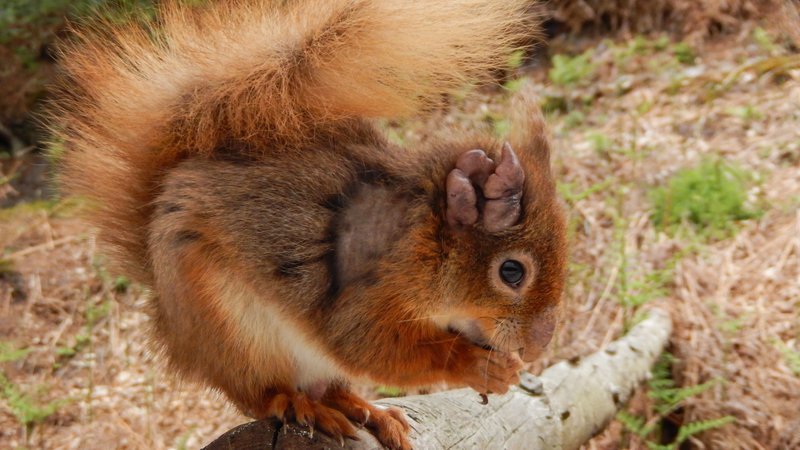
People and leprosy go way back. Way, way back.
“It’s been around for at least 5,000 years and probably longer,” says Stewart Cole, who directs the Global Health Institute at the Swiss Federal Institute of Technology.
The disease, which causes nerve damage and skin ulcers, likely originated in Africa — tens of thousands of years ago. Migrated to Asia and Europe as people did. Then moved to the Americas and back to Africa with colonists and the slave trade.
But it was during the Middle Ages that leprosy really took off in Europe. Famous people got it. Rich people got it. By 1225 A.D. there were 19,000 leprosy hospitals on the continent.
Then around the 16th century, leprosy virtually disappeared from Europe. Great Britain hasn’t had a case in centuries; people thought it was gone there. Eradicated.
But in fact, leprosy never left the island. Instead, the bacteria have been lurking in trees. Scurrying along the ground. And storing up nuts for the winter — all undetected — for hundreds of years.
Red squirrels across England, Ireland and Scotland harbor leprosy bacteria, Cole and his colleagues report today in the journal Science. Some of the critters even have signs of the disease, including damage to nerve endings and swelling in eyes, ears, feet and snouts.
But here’s the real clincher: One version of the pathogen detected in the squirrels closely matches the leprosy bacteria found in the skeletal remains buried 730 years in Winchester, England, the study reports.
In other words, leprosy has circulated in British squirrels for centuries.
“That for me was a real gobsmacker,” Cole says. “The very same strain that would cause disease in humans back in the Middle Ages was still present in the squirrels. That’s awesome.” He was inspired to begin his research after reading an obscure study that described what looked like leprosy in squirrels.
The team analyzed about 110 squirrels — some with leprosy symptoms, some without. Of the latter group, about 20 percent harbored bacteria that can cause leprosy in people. All the squirrels with symptoms carried the pathogen.
Right now, Cole says, there’s no evidence the squirrels are infecting people. But the findings upend a long-standing belief about the ancient disease: It’s a disease almost exclusively found in people (and a few armadillos).
“The new study is a paradigm shift,” says microbiologist Richard Truman, who has studied leprosy for more than 30 years at the National Hansen’s Disease Program in Baton Rouge, La.
For decades, doctors thought people caught leprosy only from other people. But in 2011, Truman and his team put a crack in that hypothesis. They showed that armadillos in the Southern U.S. — yes, here in the U.S. — were likely infecting Americans.
“We have only about 200 cases of leprosy in the Southern U.S. each year,” Truman says. “A fairly large percentage of those are associated with leprosy strains we find in the armadillos. And therefore, they’re thought to be the result of transmission from armadillos to people.” They think people get leprosy when they butcher and eat armadillos. There’s no evidence that squirrels infect people but they haven’t really looked.
But still, Truman says, doctors wondered if leprosy in armadillos was some kind of fluke, something peculiar to the unique animals .
The new study says that is definitely not the case.
Finding leprosy in squirrels, Truman says, suggests it could be hiding out in other rodents around the world. And these infected animals could be the reason why the disease has persisted at relatively high levels in some countries despite huge efforts to eliminate it.
Each year the world reports about 200,000 new leprosy cases. Most of them are India and Brazil.
“Being able to find leprosy in another animal, on another continent, really stimulates the idea that animal hosts are involved in spreading the disease,” Truman says.
But the leper squirrels in Britain also teach us a tough lesson about disease eradication, Cole says: “Even after a disease disappears from people, and we think it’s gone, it could still be out there in the environment,” he says. It could be sitting on a tree, right outside your window.
[Source:-Goats And Soda]



